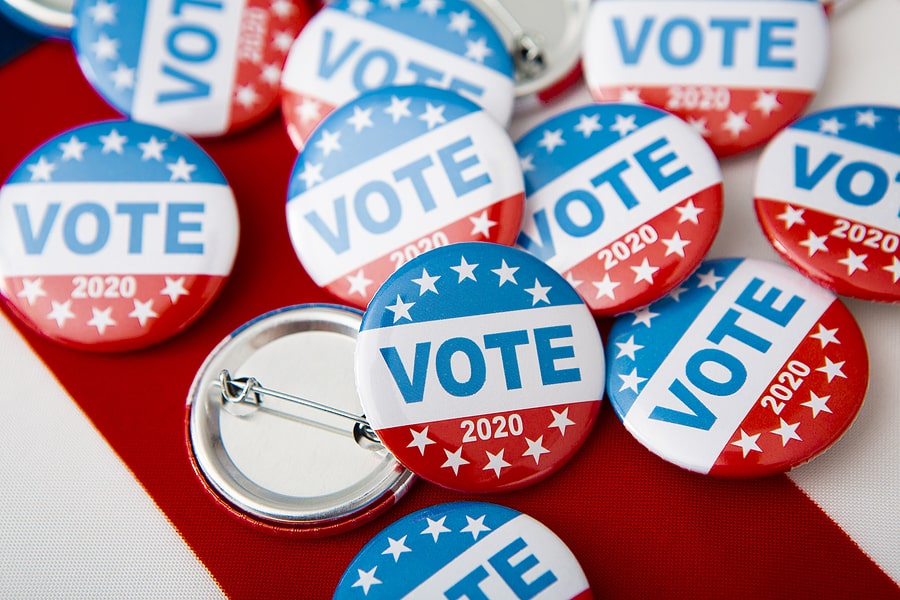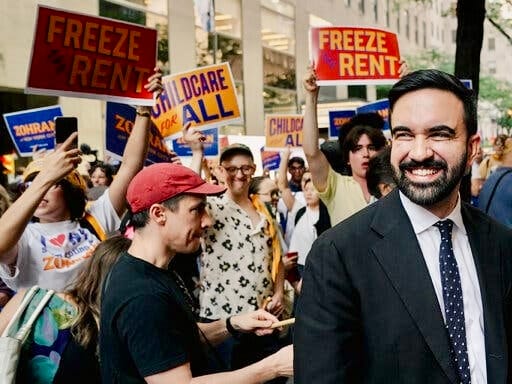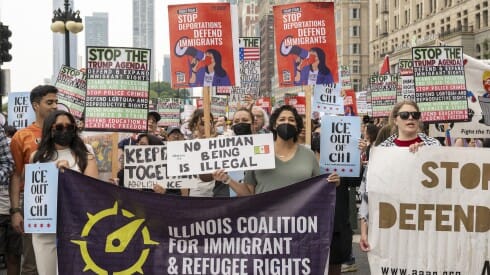An 8-point voting plan
Americans long have “complained” or “joked’ about the way we handle elections, from how Chicago Mayor Richard Daley emptied the graveyards to secure John F. Kennedy’s election in 1960, to Donald J. Trump's assertion that “millions” of illegals voted.
There is no proof of either.

But the "complaints" and "jokes" have turned into beliefs that question the integrity of our electoral system.
Appearances create their own reality. If about one-third of Americans feel the system is corrupt or unfair — and that includes both Left and Right according to polling — we can’t simply write them off. We must try to expand voting access while constricting the opportunity to cheat.
I know some say there is little cheating, this is a solution in search of a problem. That's pithy, but you use seat belts all the time although crashes are rare. Like seat belts, these suggestions are for safety and to restore confidence.
If it seems like caving in to the delusional, sometimes it is better to allow the deluded to play with the white rabbit than convince them that it doesn’t exist.
To the delusional, Trump lost.
Really, he did.
With that said, partly because of the pandemic, voting rules were changed on the fly, and different rules were imposed in different jurisdictions because our Constitution says states have the right to organize elections how they see fit, within a certain framework. This created a crazy patchwork, something the Democrats would like to fix with HR1 by putting the feds in charge.
That will be the subject of a future column.
If you enter the Way Back Machine and go to the middle of the last century, there was Election Day, not Election Week or Month. The conventional wisdom was that it was a day when we all acted together, in unity, as Americans. It was, in a quiet way, a day of national celebration.
Sometime after the ‘60s, maybe due to television, or apathy fed by a comfortable life for most Americans, or disenchantment with authority, turnout for national elections began a decades-long long slide. (It was reversed last year thanks to by Donald J. Trump, but I am not going there.)
After the ‘60s, a mild civic panic set in and politicians started tinkering with ways to increase turnout. We have tried almost everything except teaching civics in school, or compulsory voting, such as in a handful of democracies, including Australia, Belgium and Costa Rica.
We have expanded hours that polls are open. We have added voting by mail. We have drop boxes. We have made early voting a thing, sometimes weeks before Election Day.
Guess what? None of it has worked.
Going back to 1932, here is the percentage of presidential turnout:
1932 — 52.6%
1936 — 56.9%
1940 — 58.8%
1944 — 56.1%
1948 — 51.1%
1952 — 61.6%
1956 — 59.3%
1960 — 62.8%
1964 — 61.4%
1968 — 60.7%
1972 — 55.1%
1976 — 53.6%
1980 — 52.8%
1984 — 53.3%
1988 — 50.3%
1992 — 55.2%
1996 — 49.0%
2000 — 50.3%
2004 — 55.7%
2008 — 57.1%
2012 — 53.8%
2016 — 54.8%
2020 — 62.0%
Since the ‘70s, we have been stuck in the 50s with rare exception. The all-time high was 81.8% in the 1876 Centennial year.
Democrats are enraptured with sometimes sustained beliefs of “voter suppression,” which they call Jim Crow and which depresses turnout, they say.
I find it odd that when we actually had Jim Crow, turnout generally was higher than after the 1965 Voting Rights Act.
Don't get me wrong: I am not saying we didn’t need the act — we did, but things are sometimes more complicated than they appear on the surface.
For instance, if you think being able to vote by mail automatically increases turnout, I have bad news for you. Five states provide mail ballots only (and report no fraud).
The 2020 turnout: Colorado, 38%, Utah, 38%, Hawaii, 44%, Washington, 49%. Oregon was the sole “mail only” state above the national average with 77%.
Improving confidence in the system can only help, so here are 8 points of suggested action:
1- Mail-in ballots should be available on demand. When ordered for the first time, as Georgia requires, photo ID would be required, but after that only an ID number would be required. Governments will provide free photo IDs, which are better proof than matching signatures.
2- Ballots should be mailed only to registered voters requesting them. No mass mailings to everyone on error-studded voter rolls. USPS will postmark all returning ballots.
3- All ballots postmarked on election day or earlier will be counted, no matter how many days it takes. Ballots will be counted as they arrive, but held securely with the early total being kept secret. That eliminates a mountain of ballots to be counted after the polls close.
4- In-person voting will require photo ID the first time a person votes, any other ID in subsequent elections. Persons without ID will cast provisional ballots, as will people at the wrong polling place.
5- No “harvesting” or collection of ballots by anyone except duly sworn poll workers.
6- Voting by ballots received in the mail will be permitted for seven days before the election at supervised drop boxes open for 12 hours daily located only at secure locations in government buildings.
7- No “curing” (changing) ballots once they are cast. No do-overs.
8- Voting machines will not connect to the internet, but will produce a paper record.
Why photo ID? Many U.S. states and foreign nations require them and 85% of Americans have driver’s licenses. Many have other forms of government-issued ID. For the few remaining hard luck cases, there are civic, social, political, and charitable organizations which will help them get the documents. Being poor, elderly, or nonwhite does not mean you are hwlpless.
Since everything in daily life from entering a federal building to cashing a check requires photo ID, it is not a great burden.
Will a few extra guard rails improve low turnout?
Nothing else has worked, it’s worth a shot.



